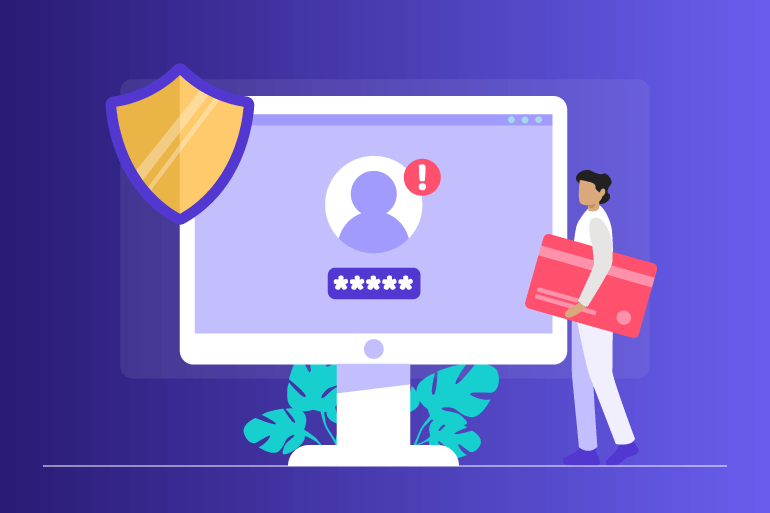What is Shadow IT and How Can Enterprise Leaders Address its Risks?



With all the benefits that technology brings, like sophisticated productivity, time-tracking and communication tools, there’s also a dark side to the digital world. Shadow IT is one such downside to modern technology, and it’s a problem you need to address.
The rise of shadow IT-related issues at the enterprise level should be a concern, since it can compromise your data and put your security measures at risk.
In this guide, we’ll address how you can identify the use of shadow IT in your enterprise and stamp it out effectively with educational initiatives and employee time software. But before we do, we’ll define the term so you’re not in the dark as to what it means.
What is Shadow IT?
Shadow IT, in simple terms, refers to any projects undertaken using the company’s information systems without the knowledge of the IT department. Specifically, it’s the completion of cloud-based IT projects without the consent of the IT department that causes most damage in cases of shadow IT.
If you are wondering how prevalent shadow IT is, you may be surprised to learn that 40% of all IT spending goes to non-IT department projects. This is a sobering statistic that highlights the need to address the issue of shadow IT to cut short the drain on your IT budget.
In many cases, shadow IT can be harmless. Employees may use unsanctioned software to get their projects done more efficiently than they’d be able to do within the company’s existing IT infrastructure. For example, if you don’t support the use of Microsoft’s online service package, yet the HR department needs to create effective spreadsheets for the payroll, they may use Excel outside of the IT department’s knowledge.
In fact, some even see shadow IT as a positive, because it can shed light on what applications employees depend on to get their work done, even if they fall outside the remit of your company’s current IT infrastructure. Shadow IT activity can, in fact, inform how you spend your IT budget by identifying the tools your team actually needs – and those they don’t.
But while Shadow IT may at times have a positive impact, there is a far more sinister side to it. Let’s take a look.
Security Threat
While in some cases shadow IT can boost productivity levels, as employees find cloud-based software that makes their job easier, the fact that this activity goes unnoticed by the IT department can lead to several risks.
While it may seem innocuous that you have employees or departments using the likes of Microsoft Excel or project management software to do their job more effectively, there is a potential security threat involved.
While it’s easy to praise the initiative taken by employees who engage in shadow IT, as they often do so in the interest of greater productivity levels, using unmanaged applications and software presents a very real risk to your enterprise’s security. If the IT department isn't made aware of what software employees are using day-in, day-out, then it’s powerless to act when things go wrong.
Imagine there’s a data leak with a software tool that some of your employees are using. The effects of this would be minimal for an IT department-controlled tool, but for one that’s being used without their knowledge, they could be disastrous.
In fact, a third of successful attacks on enterprises come via shadow IT. That means having employees using software you don’t know about is often a risk you can’t afford to take. Sensitive data being leaked through shared documents sourced through shadow IT is not something you want your enterprise to be a victim of.
Tackling Shadow IT Risks
Now that you can clearly see the risks that shadow IT presents to your enterprise, let’s take a look at what you can do to minimize them and ensure the safety of your sensitive data.
Educate your Employees
Your first priority when addressing shadow IT practices should be to educate your employees as to what it is, and what detrimental effects it can have.
While ongoing education is often preferable, to keep new hires in the loop and ensure everyone is on the same page, addressing shadow IT could be as simple as calling a meeting with senior management. That way, the message can trickle down to all levels of the organization, with employees in critical roles ensuring that everyone knows what shadow IT is and why they should avoid resorting to it.
It’s also an option to bring up the topic of shadow IT within your enterprise, and open up the floor to discussion. By promoting conversation around the issue, you make it acceptable for employees to come forward and be open about what software tools they use outside of the IT department’s knowledge. This approach also opens up the possibilities of adding more tools to your existing repertoire.
Education, paired with work time tracking software that provides visibility into the tools team members use, can be an excellent proactive approach to dealing with shadow IT.
Use Software to Counter Shadow IT
Tracking work is one way you can solve the shadow IT conundrum, without making drastic changes to your enterprise. When you employ computer tracking measures such as using software to monitor employee activity, you can accurately track what applications individuals and teams use on a daily basis.
Tracking work is made simple with Insightful, employee monitoring software for mac and Windows, as you can see at a glance what everyone is working on, and what software they are using. With this sophisticated work computer tracking approach, there should be no doubt as to where your IT funding is going.
With software like Insightful, tracking work enables you to support productivity while also safeguarding your IT infrastructure. The computer tracking features of workforce analytics tools like Insightful can also help you use shadow IT practices to your advantage, letting you know what software to invest in, or identify programs that you need to ban to protect sensitive data.
Screen capture employee monitoring tools can also be highly effective for tracking shadow IT activity, as it can capture the use of unauthorized or unsafe IT tools. Stealth employee monitoring software could well be your best bet for combatting shadow IT, since it needn’t interrupt the work day and can be used discreetly to weed out IT threats, while protecting employee privacy.
Personnel tracking software doesn’t have to get in the way of productivity, either. In fact, the best activity monitoring tools combine data security with productivity management functionality to support performance and security.
Final Thoughts
As we’ve seen, shadow IT can be a serious threat to the enterprise. But it’s not all bad. It can also be used to identify the tools that your team needs to be most productive.
However, one thing is for certain: you need to know every piece of software that’s being used in your enterprise to counter the risks of Shadow IT. To that end, it’s worth educating your workforce about the practice, and instituting a method for monitoring which applications are being used in your company’s devices.

.jpg)
.jpg)
.jpg)